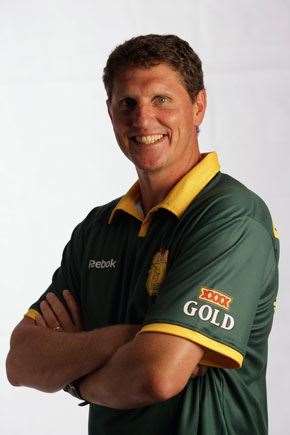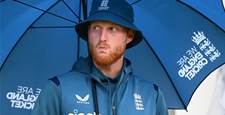The New Year’s Test, 1994. Australia had to win. Couldn’t lose. Until Fanie de Villiers begun hooping the ball about with that awkward, low-slung action.
 Fanie De Villiers. Images: Getty Images
Fanie De Villiers. Images: Getty ImagesWhat were your thoughts on Graeme Smith’s captaincy in Australia?
I was very anti-Smith when he first got picked. I’m a firm believer you’ve got three tiers to Test captaincy. The first is the most important one: in your own country you must have a captain the people love and look up to and respect and adore. That gives you more bums on seats back home because he is literally the link between the public and their cricket. So you want a captain who’s been around, who’s grown on the people, who can then take the game of cricket to the next level in the public eye. Then the second tier: will the senior players take all their knowledge, all their seasons of experience, and push that through the captain and into the system? The senior players must want him to be captain, because if that doesn’t happen, the poor bloke’s out there on his own. And the third tier is the knowledge, the man-management, the savvy, the handling of the media. Now when Graeme started at 22 years of age, he probably didn’t even have one of the three. But over the past five or six years, he’s grown on the people and he’s grown on his own players and he’s become knowledgeable, played enough years to make important decisions. He’s now out there to impress, and that’s what he’s done. He’s grown in stature, it’s wonderful to see, and hopefully he’s going to be around for the next five years.
Inside Sport recently ran a story (A Captain’s Knocks, #205) where the South African author suggested that Smith wasn’t loved at home because the South African cricket public were still wounded by the Cronje scandal. Is there truth to this?
That’s bullshit. What Hansie has done, he’s set a standard for the loveable captain, a guts-and-glory captain. And he didn’t have that at the start. Yes, he was respected and he was a good-looking guy, so the chicks loved him. But he grew on the people and within two years everybody loved him. So he set a serious standard of what a captain should look like and how the people should perceive a captain. He earned that. And Graeme Smith has now earned his time in the spotlight. He’s worked up from a nobody, to an arrogant little guy, to somebody who knows things and is respected. He’s done his time.And to get back to the South African public being jaded with the gambling thing, that’s nonsense. Really analyse Cronje’s career – year by year, all the good that he’s done, the impact he’s had with the players, with the public, all the betterment he’s done. Yes, at the end of the day he stuffed up, and the poor guy’s not here anymore, but that can’t overshadow the good that he’s done. It’s impossible to overshadow what he’s done.
Do you think South African cricket can now dominate like Australia has done for the past 15 years?
I don’t think so. I’m going to stick my neck out here and say I can’t see it because we haven’t got a normal society back home. Our society has not normalised. A lot of hassles are there, taking place now, that influence the quality of the game. A lot of players get picked who shouldn’t be picked, a lot of coaches aren’t of a standard they should be. It’s taken us 12 years of cricket to get quality – right through from the players, to the coaches, to the selectors – but you’ve got to
have a real strong society, a good system out there, to dominate for a long period of time. You guys have had it. Yes, you had Warne and McGrath, but you would’ve been top two anyway with the quality of cricket you play here. If you really want to know what the quality of our cricket is, you should play your state teams against our state teams and you’ll be very surprised to see the difference. Our system back home is not solid yet. It’s heading toward it and we all support it, but there are huge gaps. So until that’s sorted, we’ll compete in the top three for a long time, but we can’t dominate like you guys have.
Is cricket making headway in South Africa’s black population?
We’re doing a hell of a lot for development. But if you’ve got 34,000 black schools in the country and only 300 to 400 of those play cricket, then you’re not really finding all the talent you should find. We’ve got 20,000 white schools and every one of those plays cricket. That makes a huge difference. So our cricket players of colour come through the white schools. They don’t come from the development program, unless you find, say, a Makhaya Ntini and put him in a top cricketing school where you have top coaches nurturing him. So just out of our development show, I’m afraid to say, not too much will happen. But you will find a bit of flair here and there, and that flair needs to be nurtured and taken into proper cricketing schools.
– Aaron Scott
Related Articles

Playing From The Tips Ep.100: Webex Sydney, Honda LPGA, Mexico & Kenyan Opens

Burmester claims LIV Golf Chicago in three-way playoff













